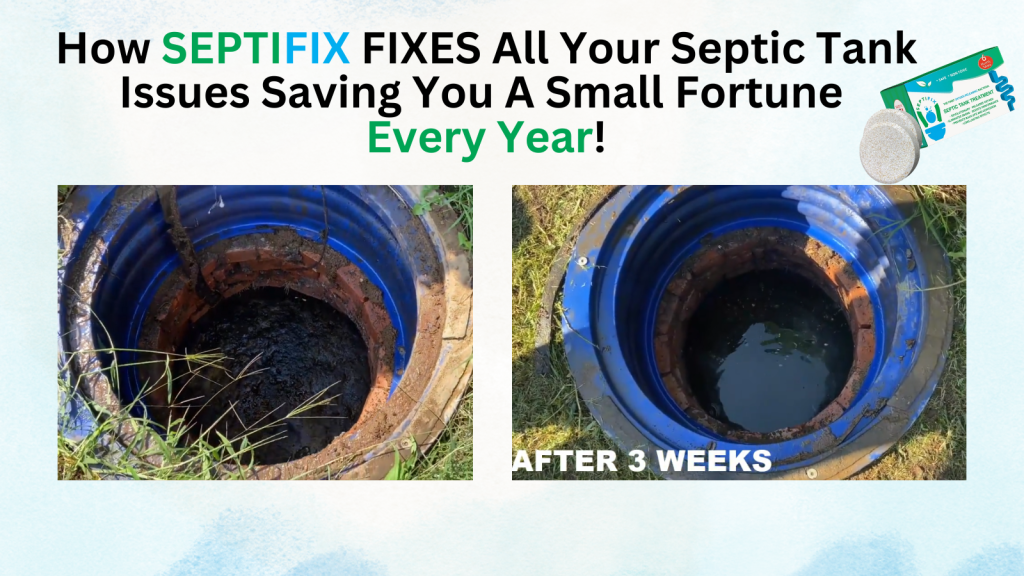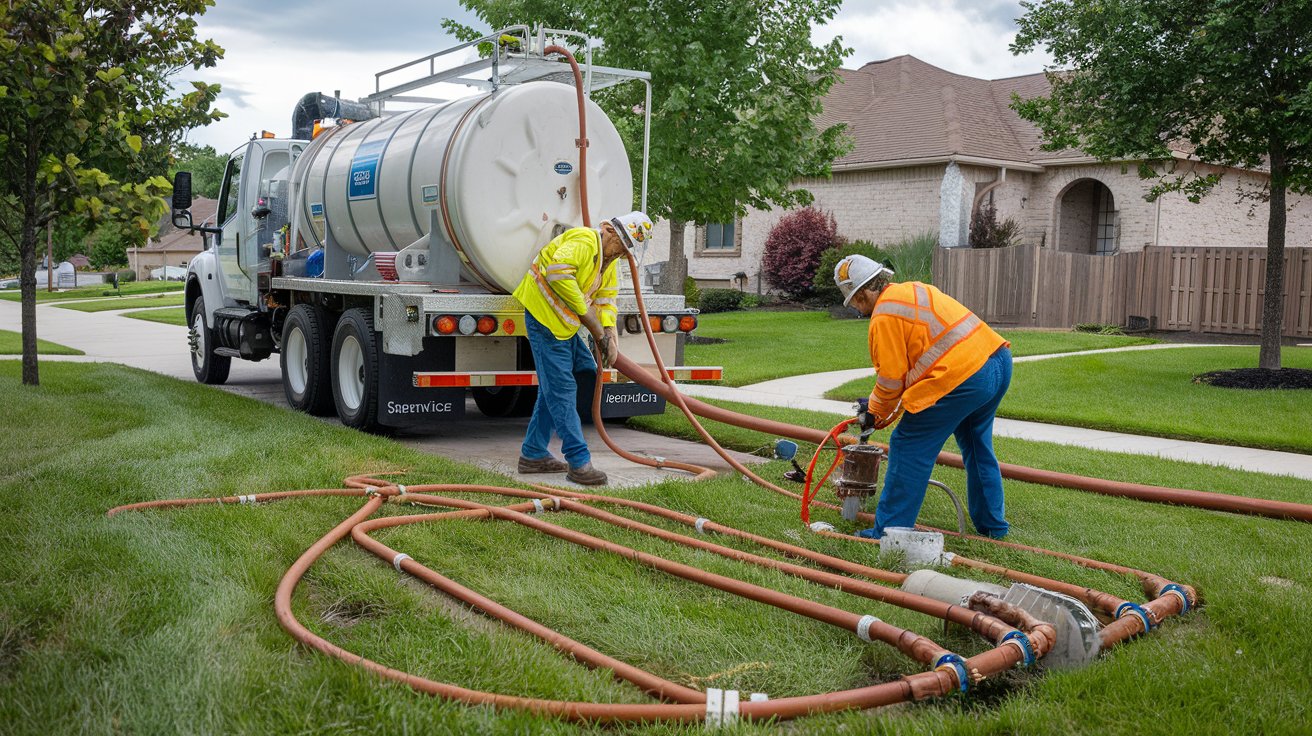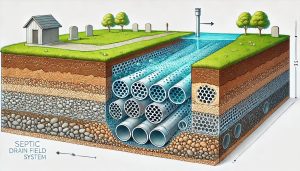Septic tank pumping is a crucial part of maintaining your home’s wastewater system. Without regular care, you risk expensive repairs, unpleasant odors, and potential environmental issues. Knowing the cost of septic tank pumping helps homeowners plan ahead, budget effectively, and avoid unnecessary surprises.
Table of Content
- What is Septic Tank Pumping?
- Average Cost of Septic Tank Pumping
- Factors Affecting the Cost of Septic Tank Pumping
- How to Save on Septic Tank Pumping Costs
- Benefits of Regular Septic Tank Pumping
- How to Choose the Service Provider
- Septifix
- Septic Permit Links by State
This guide provides a detailed breakdown of septic tank pumping costs, explores factors that influence pricing, and offers tips to save money. Whether you’re new to septic system maintenance or want to refine your current routine, this resource will help you make informed decisions.
What is Septic Tank Pumping?
Septic tank pumping is the process of removing solid waste and sludge that accumulates in your septic tank over time. This routine maintenance step is essential to ensure your septic system operates efficiently and prevents costly issues like clogs, backups, or system failures.
When waste enters the septic tank, solids settle at the bottom, forming sludge, while lighter materials like grease float to the top as scum. Over time, these layers build up and reduce the tank’s capacity, requiring professional pumping to remove them.
Regular septic tank pumping not only helps maintain the system’s functionality but also protects the environment by preventing harmful waste from leaking into the soil or groundwater. By understanding the cost of septic tank pumping, you can better plan for this necessary service and avoid unexpected expenses.
Average Cost of Septic Tank Pumping
The cost of septic tank pumping typically ranges from $200 to $600, depending on various factors. While this might seem like a significant expense, regular pumping can save you from far more costly repairs or system replacements down the line.
Factors Influencing the Cost:
- Tank Size: Larger tanks require more time and effort to pump, which increases the price. For example, a 1,000-gallon tank might cost less to pump than a 2,000-gallon tank.
- Frequency of Pumping: Regular maintenance can help keep costs predictable. Tanks that haven’t been pumped in years may require additional labor and incur higher fees.
- Location and Accessibility: If your tank is in a hard-to-reach area or far from the service provider, you may pay extra for travel or equipment adjustments.
- Additional Services: Some companies offer inspections or treatments during pumping, which can add to the total cost.
Typical Price Breakdown:
- Small Tanks (up to 1,000 gallons): $200–$400
- Medium Tanks (1,000–2,000 gallons): $300–$500
- Large Tanks (over 2,000 gallons): $400–$600 or more
Understanding these cost factors can help you make informed decisions when scheduling septic tank pumping services. By comparing providers and maintaining a regular schedule, you can better manage expenses and extend the life of your septic system.
Factors Affecting the Cost of Septic Tank Pumping
Several factors influence the cost of septic tank pumping, and understanding them can help you plan and budget more effectively.
1. Tank Size
The size of your septic tank is one of the most significant factors. Larger tanks hold more waste and require more time and effort to pump. For instance:
- A 1,000-gallon tank might cost around $250–$400 to pump.
- A 2,000-gallon tank could range from $400–$600 or more.
2. Frequency of Pumping
Regularly scheduled pumping can keep costs manageable. Neglected tanks often accumulate more waste, leading to longer service times and higher fees. For example:
- Pumping every 3–5 years is typical for most households.
- Tanks left unpumped for a decade or more may require extensive cleaning, increasing costs.
3. Location and Accessibility
The easier it is for a service provider to access your septic tank, the lower the cost. Factors that can raise prices include:
- Tanks located in remote or hard-to-reach areas.
- Tanks buried under landscaping or driveways, which may require additional work to access.
4. Emergency Services
If you need septic tank pumping on short notice due to a backup or system failure, expect to pay a premium. Emergency services often cost 1.5 to 2 times the standard rate.
5. Additional Fees
Certain services or situations may add to the overall cost, such as:
- Eco-Friendly Treatments: Using environmentally friendly treatments to break down waste can also increase the bill.
- Inspections: Some companies offer a detailed inspection during pumping for an additional fee.
- Repairs: If issues like cracks or leaks are discovered, repair costs may be added.
How to Save on Septic Tank Pumping Costs
While the cost of septic tank pumping can seem like a significant expense, there are several strategies to reduce costs and ensure efficient system maintenance.
1. Schedule Regular Maintenance
Regular pumping prevents excessive buildup of sludge and scum, which can make the process more time-consuming and costly. Most tanks need to be pumped every 3–5 years, but the frequency depends on usage and tank size. Staying on schedule helps avoid emergency fees and potential system damage.
2. Compare Service Providers
Not all septic service companies charge the same rates. Get quotes from multiple providers in your area to find the best value. Look for companies that offer package deals, such as inspections included with pumping services.
3. Optimize Your Tank Usage
- Conserve Water: Reducing water usage minimizes the strain on your septic system.
- Dispose of Waste Properly: Avoid flushing items like wipes, grease, or non-biodegradable materials that can clog the tank and require more frequent pumping.
4. Use Septic-Friendly Products
Invest in products designed to support septic systems, such as biodegradable cleaners and enzyme treatments. These can help break down waste and reduce the frequency of pumping.
5. Plan Ahead
If you anticipate needing septic tank pumping, avoid waiting until the last minute. Emergency services are often much more expensive. By scheduling in advance, you can secure a convenient time and potentially lower costs.
6. Maintain Accessibility
Ensure your septic tank is easy to access by keeping the area clear of obstructions like landscaping, fences, or heavy equipment. This reduces labor time and keeps service fees lower.
By implementing these tips, you can manage the cost of septic tank pumping effectively while maintaining a healthy and efficient septic system. Proactive care not only saves money but also extends the life of your septic system, ensuring peace of mind for years to come.
Benefits of Regular Septic Tank Pumping
Routine septic tank pumping is more than just a maintenance task—it’s an investment in your home and the environment. Here are the key benefits of staying on top of this essential service:
1. Prevents Costly Repairs
Neglecting your septic tank can lead to clogs, backups, and even complete system failures. These issues often require expensive repairs or full system replacements, which can cost thousands of dollars. Regular pumping minimizes the risk of these problems.
2. Protects Your Property
A poorly maintained septic system can cause sewage to back up into your home or yard, leading to unpleasant odors, property damage, and potential health hazards. Regular pumping keeps your system running smoothly and your property safe.
3. Extends the Life of Your System
Septic systems are designed to last for decades, but only if they’re properly maintained. Routine pumping removes waste buildup that can damage the tank and its components, helping to extend the system’s lifespan.
4. Safeguards the Environment
A failing septic system can leak harmful waste into the soil and groundwater, posing risks to local ecosystems and drinking water supplies. Regular pumping ensures that your system operates efficiently, reducing its environmental impact.
5. Improves System Efficiency
An overfilled septic tank can hinder the system’s ability to treat wastewater effectively. Pumping restores the tank’s capacity, ensuring that your system functions as it should.
By prioritizing regular septic tank pumping, you not only save money but also protect your home, your family, and the environment. The cost of septic tank pumping is a small price to pay compared to the benefits of a well-maintained system.
How to Choose the Service Provider
Selecting the right service provider is crucial to ensuring quality work and fair pricing. Here are some tips to help you choose the best septic tank pumping service:
1. Check Credentials
Ensure the company is licensed, insured, and certified to perform septic services in your area. This guarantees that they meet industry standards and can handle the job professionally.
2. Read Reviews and Testimonials
Look for customer reviews on platforms like Google, Yelp, or the Better Business Bureau. Positive feedback and high ratings indicate reliable service. Ask friends or neighbors for recommendations as well.
3. Compare Pricing
Request quotes from multiple companies to compare rates and services offered. Be cautious of prices that seem unusually low, as they may indicate subpar work or hidden fees.
4. Ask About Services Offered
Some companies provide additional services like inspections, repairs, or septic treatments during pumping. Opt for a provider that offers a comprehensive package to save time and money.
5. Confirm Equipment and Techniques
Ensure the company uses modern equipment and follows best practices for septic tank pumping. Advanced tools and techniques can make the process more efficient and thorough.
6. Evaluate Customer Service
A professional and responsive company will answer your questions, explain the process, and provide clear information about costs and scheduling. Good communication is a sign of trustworthy service.
7. Check for Warranties or Guarantees
Some providers offer warranties on their work, giving you peace of mind in case any issues arise after the service.
By taking these steps, you can find a reliable septic tank pumping service that delivers quality results at a fair price. A good provider will not only help you manage the cost of septic tank pumping but also ensure your system remains in top condition.
Conclusion
Understanding the cost of septic tank pumping and its importance in maintaining a healthy septic system is key to protecting your home and saving money in the long run. Regular pumping prevents costly repairs, extends the life of your system, and helps safeguard your property and the environment.
By considering factors like tank size, frequency of service, and location, you can better plan for septic tank maintenance and keep costs manageable. Additionally, following tips for saving money, choosing a reliable service provider, and staying on top of regular maintenance will ensure your septic system operates efficiently for years to come.
Need help with septic tank maintenance? Check out our product reviews and expert recommendations to keep your system in optimal condition!
Septifix









